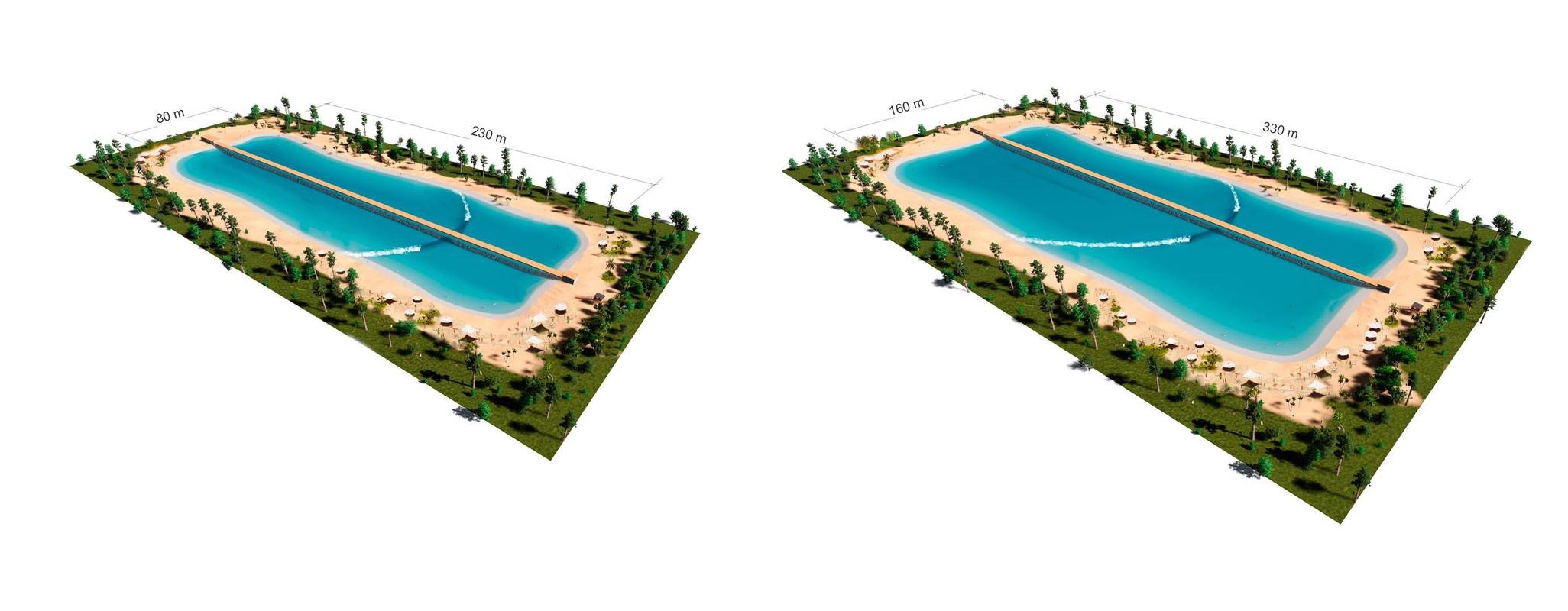How the Wavegarden Lagoon system works

The first of the wave pool 2.0 generation to break ground nearly a decade ago is alive and well at Adventure Parc Snowdonia. This is the beast that launched the whole revolution while Kelly, Greg Webber, Lochtefeld and others were still in the lab. Developed deep in the Basque Country of Spain, the world woke to the Lagoon in 2010 via low-res YouTube videos. With the prototype an hour drive from Hossegor, Wavegarden’s launch benefited greatly from traveling CT pros who made the small waves look doable. This first prototype, a plastic-lined pond about the size of your corner 7-Eleven, gave way to a revamped design in a larger pond. This larger model showed us the full potential and included a pier running down the center of the wave pool. The first full-scale Lagoon went up at Surf Snowdonia in 2015. Another one opened in Austin Texas shortly afterward.
The system works like Kelly’s wave system and the China wave pool. A submerged hydrodynamic wave foil (hull) powered by a gearless drive system runs down a central track that splits the rectangular lagoon. The hull moves at a speed between 4.5m and 7.5m (14.7ft-24.6ft) per second and pushes out a large wake that breaks along either side of a central pier creating a right and a left simultaneously. Speed of the foil determines the size of the wave generated. Once the swell is pushed out it interacts with the shallows of the lagoon bathymetry to form the wave we see today. A right and a left between 2-to- 6-feet high on the face can be generated roughly every 90 seconds with rides up to 30 seconds long. Despite commercial viability obstacles including a low waves-per-hour count and the pool requiring a long, straight piece of land, the lagoon started the wave pool revolution we see today and anchors the ever-popular Adventure Parc Snowdonia facility in Wales.
Related Coverage
